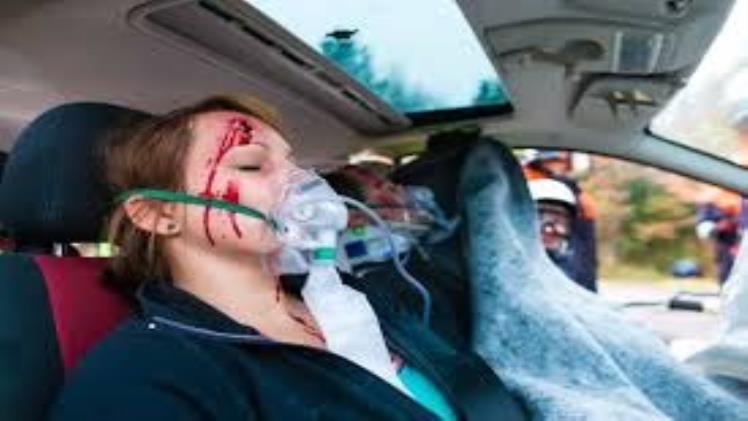Driving comes with inherent risks, and accidents can happen suddenly—even to the most cautious drivers. When a collision occurs, the minutes that follow are crucial, not just for assessing damage but for checking the safety and well-being of everyone involved. Understanding basic first aid and how to react calmly after a crash can make a significant difference in how the situation unfolds. Drivers equipped with this knowledge are better prepared to handle injuries, support others at the scene, and provide helpful information to emergency services while staying composed under pressure.
Table of Contents
Calm actions help reduce injury and confusion
After an accident, staying calm, checking for injuries, and applying first aid when necessary can prevent further harm. Quick thinking, basic medical care, and communication with responders help stabilize the situation until professional help arrives.
Assessing the Scene and Prioritizing Safety
The first step after any car accident is to assess the immediate environment. Is it safe to exit the vehicle? Are there hazards like leaking fuel, broken glass, or oncoming traffic? Ensuring your safety first is not selfish—it’s necessary in order to help others. Once the surroundings are secure, checking yourself and passengers for injuries is the next priority. Not all injuries are visible, especially with the shock of an impact. Dizziness, confusion, or numbness may indicate a more serious problem. If others are involved, ask simple questions to determine their level of consciousness and responsiveness. Avoid moving anyone with possible head, neck, or back injuries unless there’s an immediate danger, such as a fire. Providing reassurance and keeping them still while waiting for emergency services is critical. Staying calm during this process helps maintain order and gives those injured a sense of stability. While you may not be a medical professional, you can still play a vital role in the moments before help arrives.
Administering Basic First Aid While Waiting for Help
When injuries are apparent—such as bleeding, shallow breathing, or signs of shock—having even basic first aid knowledge becomes crucial. Applying pressure to wounds with clean materials can slow or stop bleeding. Keeping an injured person warm with a jacket or blanket can help prevent shock, especially in cold weather. Ensuring that airways remain clear and the person continues to breathe steadily is also essential. Drivers who have taken first aid training edmonton are often more confident in their ability to respond effectively in these high-stress situations. Training prepares individuals to recognize the severity of various injuries, understand when to administer CPR, and how to communicate effectively with emergency responders. In some cases, your actions during those first few minutes can help stabilize someone’s condition, buying precious time until medical professionals arrive. Even without supplies, your presence, calm voice, and gentle reassurance can have a meaningful impact on someone who is frightened or disoriented.
Communicating Clearly and Staying Organized
Accidents can create chaos. People may be yelling, panicking, or unsure of what to do next. One of the most helpful things a driver can do is bring clarity to the situation through calm, clear communication. Call emergency services as soon as possible, providing them with your exact location, a brief description of the accident, and information about any injuries you’ve observed. If others are nearby and willing to assist, assign them tasks—such as directing traffic, calling a family member, or retrieving a first aid kit. Avoid offering medical advice unless you are trained to do so. Instead, focus on comfort, safety, and waiting for help to arrive. If you’re physically able and the situation allows, document the scene with photos and gather information, but never let that take priority over providing care. Your role during these moments is to ensure the safety and welfare of those around you, and part of that means managing confusion with composed and purposeful actions.
Long-Term Preparedness for Road Emergencies
One car accident can change your perspective on what it means to be a responsible driver. First aid awareness is not just about what you do in a single incident—it’s a mindset of readiness that you carry with you on every journey. Keeping a stocked first aid kit in your vehicle, knowing how to use its contents, and reviewing emergency procedures regularly are small habits that can have life-saving outcomes. Encourage family members and regular passengers to be familiar with these procedures as well. Having visible emergency contact information, knowing which hospitals are nearby, and practicing safe driving habits all contribute to your overall preparedness. It’s also valuable to reflect on how you reacted after an accident. Was there anything you could have done differently? Did you feel confident in your decisions? These reflections support continuous improvement and allow you to remain composed in future scenarios. Preparedness is an ongoing responsibility, and the more you practice awareness, the more capable you become of handling whatever the road brings.
Conclusion
Car accidents are stressful, unpredictable events, but they don’t have to become tragedies. When drivers are informed, prepared, and trained in first aid, they can help reduce injury severity and provide meaningful support during critical moments. From assessing danger to administering care and coordinating a response, your actions matter. Staying calm, acting with clarity, and being physically and mentally ready can transform how an emergency unfolds. First aid knowledge empowers drivers to step up when needed most, offering comfort and stability when others might feel lost. With the right preparation, every driver can become a safer and more reliable presence on the road.



